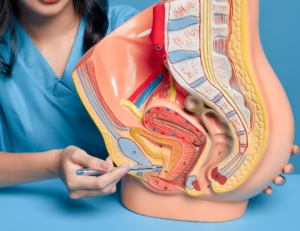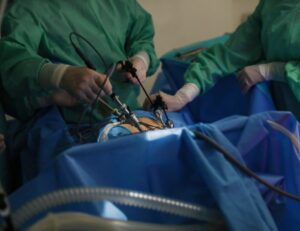Preeclampsia is a complex condition that can occur during pregnancy, characterized by high blood pressure and signs of damage to another organ system, most often the liver and kidneys. It typically begins after 20 weeks of pregnancy in women whose blood pressure had been normal. Understanding the signs, prevention strategies, and management options is crucial for expecting mothers. In this blog, we’ll delve into what preeclampsia is, how it can be avoided, and the critical signs to watch for.
What is Preeclampsia?
Preeclampsia is a pregnancy complication that causes high blood pressure and can lead to serious, even fatal, complications for both mother and baby if not managed properly. It affects the blood flow to the placenta, often leading to smaller or prematurely born babies.
Signs to Look For:
- High blood pressure: Often the first sign. Regular prenatal visits help monitor this.
- Protein in urine: A sample may be taken to check for protein, a sign that your kidneys may not be working normally.
- Severe headaches: Persistent or severe headaches can indicate brain involvement.
- Changes in vision: Vision problems can include temporary loss of vision, light sensitivity, or blurry vision.
- Upper abdominal pain: Usually under the ribs on the right side.
- Nausea or vomiting: These symptoms can appear suddenly during the second half of pregnancy.
- Decreased urine output: Less urine or darker urine can be a sign.
- Sudden swelling: A sudden increase in swelling in your face, hands, and eyes can be a symptom of preeclampsia.
How to Avoid Preeclampsia:
While there is no guaranteed way to prevent preeclampsia, there are several measures that can reduce the risks:
- Regular prenatal care: Frequent check-ups can catch the early signs of preeclampsia.
- Diet and exercise: Maintain a healthy lifestyle, with a diet rich in fruits, vegetables, whole grains, and lean proteins. Regular, moderate exercise can also help.
- Monitor salt intake: Avoid excessive salt, but do not eliminate it entirely. Consult with your healthcare provider for guidance.
- Stay hydrated: Drink 6-8 glasses of water a day.
- Avoid alcohol and tobacco: Both can increase the risk of preeclampsia.
What to Do if You Have Preeclampsia:
- Monitor your condition: If diagnosed, you’ll need frequent check-ups to monitor the health of you and your baby.
- Medications: Your doctor might recommend medications to lower blood pressure or help prevent seizures.
- Dietary changes: As advised by your healthcare provider.
- Possible early delivery: In some cases, early delivery is necessary to prevent complications.
Preeclampsia is a serious medical condition that requires careful management and regular monitoring. Understanding the signs and preventive measures can greatly contribute to the well-being of both mother and baby. If you suspect any symptoms of preeclampsia, contact your healthcare provider immediately.
For more information on managing your pregnancy and ensuring you and your baby’s health, visit our WomanCare offices or contact our specialists. We are here to support you every step of the way.








